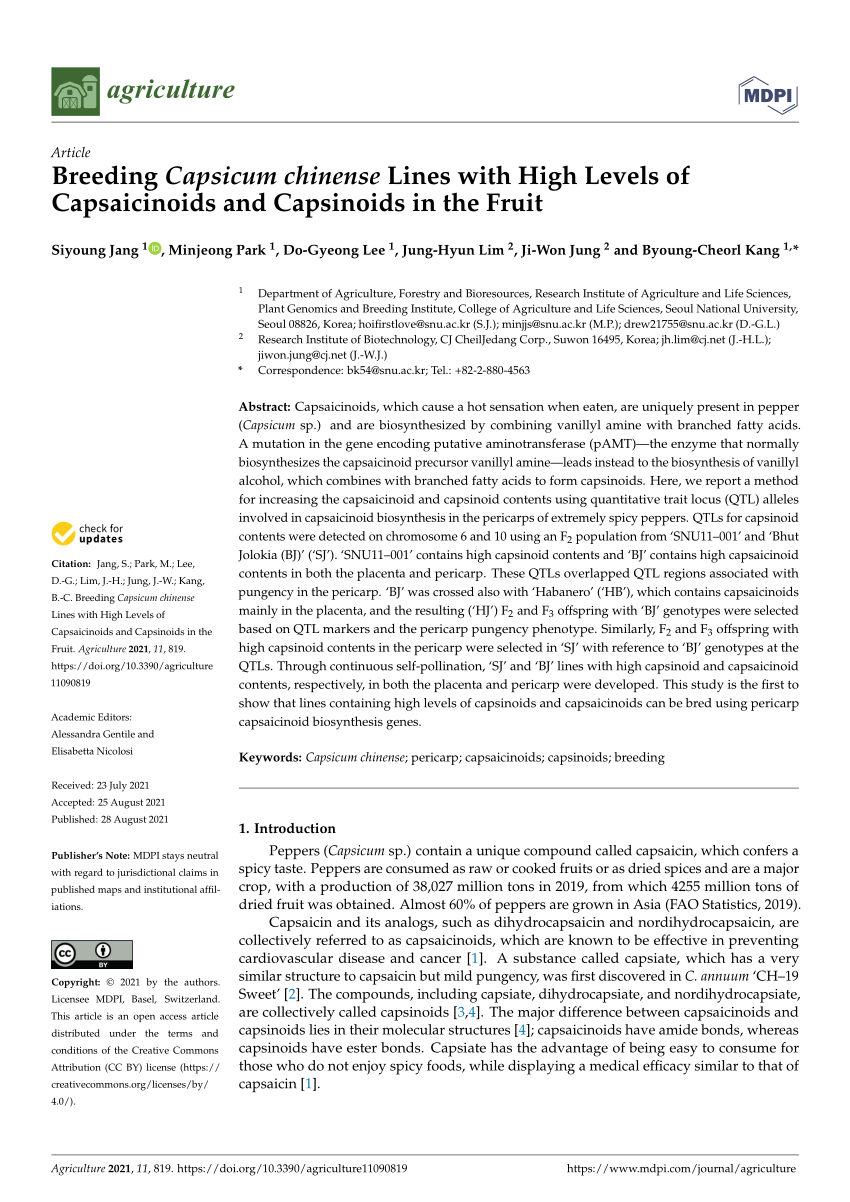It is worth noting that in the paper they describe using QTL markers for coding regions relative to the production of capsaicin; for screening purposes. This means that plants can be evaluated for the presence of super hot alleles in the seedling stage before fruiting. This paper can even be used to help identify those alleles...
However for the purpose of screening fruit traits the authors nevertheless performed evaluations based upon the berries themselves, including confirming pericarp capsaicin levels as well as plant yield.
This is significant as that clandestine and or hobby growers are not typically able to use bioinformatic analysis to identify allele, but those who are able to do this must still resort to berry based selection.
Absent from the paper is the fact that super hot peppers have an extension of the placental membrane lining the berry, this macroscopic trait is unmistakable. Partial super hots have a partial membrane, often only extending in the upper 1/3 to 1/2 of the berry. I often call this membrane a pseudo-placental membrane, it is normally thin and paper like. There is a degree of variation in this membrane but it is either present or absent and a pepper cannot be super hot without it. This means that the QTL allele analysis stuff in the paper only serves to confirm what the berry traits had already confirmed.
Even when plants in the study were genetically identified as having the genetic aspects responsible for the desired traits it still all comes down to macroscopic trait selection at the F2 generation and afterward.
The paper illustrates a method of breeding showing how super hot alleles can be introduced into other lines via repeated crossing and selection and it gives Bhut Jolokia as the source of those alleles.
Ironically the source of the allele for the pseudo-placental membrane that allows Bhut Jolokia to be super hot is Capsicum frutescens 'Lota Bih', which was bred to a Capsicum chinense variety and selected for, in other words the hybrid Bhut Jolokia originates via the very same type of cross breeding that the paper employs. The very existence of the interspecific hybrid Bhut Jolokia confirms what this paper also did, but what was not already clear was that alleles for capsinoids instead of capsaicinoids can also be plugged into this expression, so to speak.
It was also evident that the varieties produced by the experiment in the paper took 6-8 generations of selection and stabilization to arrive at, despite some of the desired traits being evident even at F2. A lot of people here have mentioned that they feel that it takes at least 7 generations arrive at a true breeding capsicum variety when starting from a hybrid, this paper supports that opinion. The only exception being that if there are ways to identify the alleles then homozygous true breeding plants can be potentially identified as early as in the F2 and F3 generations, but this requires genetic screening of typically enormous populations and that is beyond what a meager hobby grower like me is able to do.
So in effect the paper shows how a person can turn a (genetically compatible) Capsicum line into a super hot line by introducing super hot alleles via hybridization and then selection over generations. Breeders and horticulturalists know this stuff by heart anyway but some of the most interesting crosses and forms arise out of the non-commercial sector where such knowledge is often obscure.

 www.researchgate.net
www.researchgate.net

